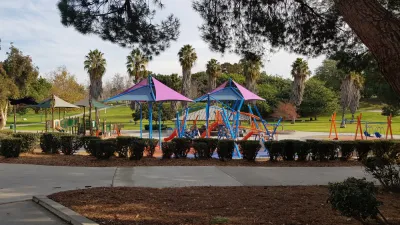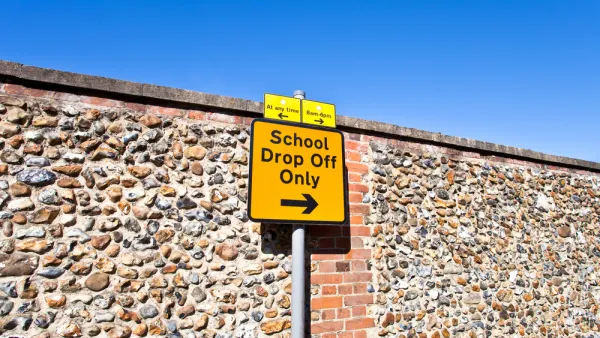Los Angeles Unified School District is in the process of implementing a plan to ensure that at least 30 percent of all campuses include green spaces by 2035.

The Los Angeles Unified School District (LAUSD), California’s largest school district and the nation’s second largest, announced in June that it is using over $229 million in bond money to, among other projects, upgrade facilities and provide sustainable green spaces for students using a greening index to prioritize the campuses most in need.
The greening index combines two measures of need: 1) school site-specific need and 2) community-based need. A school’s green score is based on the percentage of green space on a campus compared with its total area; and a score derived from results of the Los Angeles County’s 2016 Parks Needs Assessment (PNA), a countywide study of the diverse parks and recreation facilities throughout LA County’s cities and unincorporated communities. Prepared by the Los Angeles County Department of Parks and Recreation (DPR), the PNA gathered data to determine the scope, scale, and location of park need in Los Angeles County.
In September 2022, the Los Angeles Board of Education unanimously voted to accelerate and greatly expand efforts to bring green space to all its campuses. The resolution, authored by Board President Kelly Gonez, establishes a minimum standard of 30% green space for all campuses and directs the superintendent to develop a plan to meet the standard district-wide by 2035. Research shows that green spaces on or around a school campus help improve student well-being, physical and mental health, as well as academic performance. Currently, only 16% of LAUSD campuses meet the green space standard of 30%.
As reported by Nadra Nittle, the investments being made by LAUSD are partly the result of activism by students, parents, and advocates to make campuses more sustainable. As some studies have shown, extreme heat makes it challenging for young people to learn and disproportionately affects schools serving communities of color and economically disadvantaged families. School officials are being urged to ensure that all students have access to quality learning environments and take bold actions to greening campuses, reimagining the role that schools can play in advancing sustainability.
FULL STORY: California’s largest school district is spending millions to protect kids from climate change

Analysis: Cybertruck Fatality Rate Far Exceeds That of Ford Pinto
The Tesla Cybertruck was recalled seven times last year.

National Parks Layoffs Will Cause Communities to Lose Billions
Thousands of essential park workers were laid off this week, just before the busy spring break season.

Retro-silient?: America’s First “Eco-burb,” The Woodlands Turns 50
A master-planned community north of Houston offers lessons on green infrastructure and resilient design, but falls short of its founder’s lofty affordability and walkability goals.

Test News Post 1
This is a summary

Analysis: Cybertruck Fatality Rate Far Exceeds That of Ford Pinto
The Tesla Cybertruck was recalled seven times last year.

Test News Headline 46
Test for the image on the front page.
Urban Design for Planners 1: Software Tools
This six-course series explores essential urban design concepts using open source software and equips planners with the tools they need to participate fully in the urban design process.
Planning for Universal Design
Learn the tools for implementing Universal Design in planning regulations.
EMC Planning Group, Inc.
Planetizen
Planetizen
Mpact (formerly Rail~Volution)
Great Falls Development Authority, Inc.
HUDs Office of Policy Development and Research
NYU Wagner Graduate School of Public Service



























